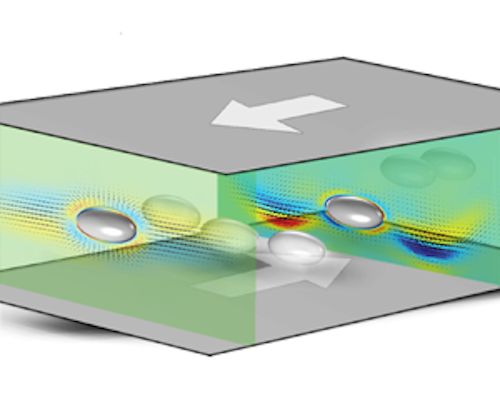BME students publish work in leading fluid mechanics journal

block Heading link

According to research published in the National Institutes of Health National Library of Medicine, inertial focusing has enabled high-throughput, simple, and precise manipulation of fluids for various applications in point-of-care and clinical diagnostics over the past five years.
Inertial focusing is a phenomenon where suspended particles migrate across streamlines and focus at well-defined equilibrium points in the microchannel cross-section.
Some of the original notable research on initial inertial focusing was published in the Journal of Fluid Mechanics, where Richard and Loan Hill Department of Biomedical Engineering graduate alumnus Giuseppe Lauricella, PhD student Moein Naderi, Assistant Professor Zhangli Peng, Richard and Loan Hill Professor Ian Papautsky, and Research Assistant Professor Jian Zhou recently had a paper published.
Their work focused on a surprising phenomenon where particles in a two-wall microfluidic system shift away from the center and reach a new equilibrium position under certain flow conditions.
The idea behind this research, Lauricella said, is that “if you have a particle in this system, one would ideally expect that it moves to the center because the system is symmetric, but what we found is that under certain flow conditions, it can shift away from the center and it can reach a new off-center equilibrium position.”
After reading a related paper in the same journal, Lauricella decided to pursue this idea. Unlike the previous research where spherical particles were used, Lauricella and his team’s work used ellipsoidal particles in inertial shear flow.
Their work demonstrated when the Reynolds number is increased, and the velocity of the two moving walls is at a certain condition, the ellipsoidal particles will shift away from the center. It also showed that these particles could move back to the center, which was unexpected.
“We also found this new behavior of the particles was a way to test our methods to apply to the ellipsoidal particles,” Lauricella said. “Previous research only used spherical particles, so we tried more complicated shapes, which is possible using our in-house code, which can be further explored in future research.
Lauricella’s work involved the use of smoothed particle hydrodynamics and the finite element method simulations, which allows researchers to model complex fluidic systems and extrapolate information that would not be possible to capture through laboratory experiments.
“As the particle is at the center, you just assume that it stays there because the system is symmetric, but you don’t have any information about the flow, i.e. the real underlying mechanism, which is something that I tried to explain with FEM simulations,” Naderi said.
As their research was conducted in simulations, Lauricella and Naderi believe that this research should ideally be validated through an experiment to further confirm their findings.
“It’s a similar physical mechanism that is exploited in inertial microfluidics or other applications such as flow cytometry for cell sorting and cell separation,” Lauricella said. “Our hope is that the findings will be the basis for a new method for particle cells and particle separation.
Simulations in this work were conducted using the Theta Supercomputer at Argonne National Laboratory.